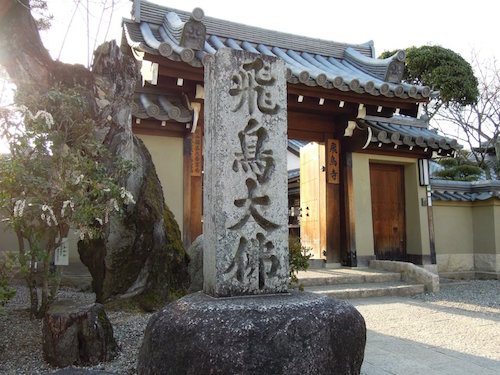183. The "Flying" Radical: 飛
From my vantage point, flying seems immensely complicated. The nine-stroke 飛 radical also looks complex but is really quite straightforward.
Its shape is identical to that of the following Joyo kanji:
飛 (566: to fly; fiercely)
The radical has no variant forms and is on duty only in 飛 itself.
This kanji has two Joyo kun-yomi, including と•ぶ. Accordingly, the Japanese call the radical とぶ. In English the radical name is "flying" or "fly."
Henshall says in his newer edition that 飛 depicts a "bird with wings spread in flight," denoting "rise up high" and therefore "fly." He cites another researcher who posits that an early form of this character might represent a "distant view of birds in flight."
And that's all it takes to fly with this radical!

Photo Credit: Yoshikazu Kunugi
The photographer calls this "The most impressive and oldest-looking slab inscription I've ever seen." It stands at the main gate of 飛鳥寺 (あすかでら), a historically significant temple in the village of Asuka in Nara Prefecture on Honshu. The stone features these words:
飛鳥 (あすか: Asuka, a place name)
大佛 (だいぶつ: great Buddha), where the non-Joyo 佛 is the old shape of 仏
According to Wikipedia, the main object of worship at this temple is the bronze Great Buddha, which is thought to date to the early seventh century.
